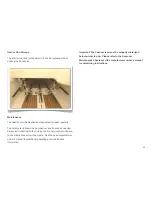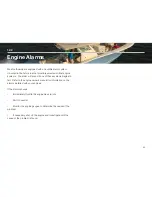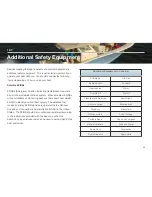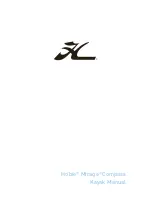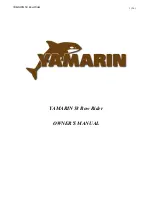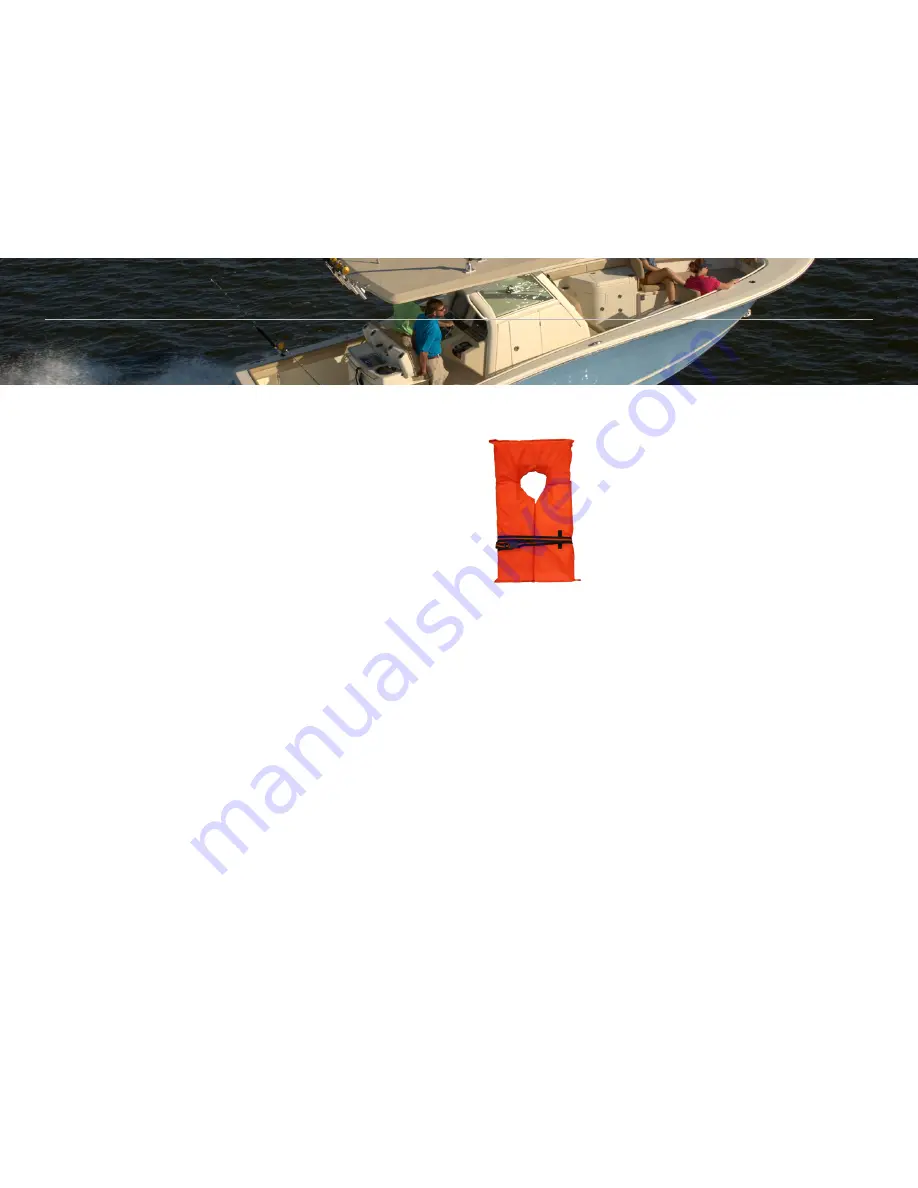
Besides the equipment installed on your boat by Scout, certain
other equipment is required by the U.S. Coast Guard to help
ensure passenger safety. Items like a sea anchor, working
anchor, extra dock lines, flare pistol, life vests, a line permanently
secured to your ring buoy, etc. could at some time save your
passengers’ lives, or save your boat from damage. Refer to the
“Federal Requirements And Safety Tips For Recreational Boats”
pamphlet for a more detailed description of the required
equipment. You can also contact the U.S. Coast Guard Boating
Safety Hotline, 800-368-5647 or 800-336-2628 and
800-245-2628 in Virginia, for information on boat safety courses
and brochures listing the Federal equipment requirements. Also,
check your local and state regulations.
The Coast Guard Auxiliary o
ff
ers a “Courtesy Examination.” This
inspection will help ensure that your boat is equipped with all of
the necessary safety equipment.
The following is a list of the accessory equipment required on
your boat by the U.S. Coast Guard:
Personal Flotation Devices (PFDs)
PFDs must be Coast Guard approved, in good
and serviceable condition, and of appropriate
size for the intended user. Wearable PFDs
must be readily accessible, meaning you must
be able to put them on in a reasonable amount
of time in an emergency. Though not required,
the Coast Guard emphasizes that PFDs should
be worn at all times when the vessel is underway. Throwable
devices must be immediately available for use. All Scout boats
must be equipped with at least one Type I, II or III PFD for each
person on board, plus one throwable device (Type IV).
Visual Distress Signals
All Scout boats used on coastal waters, the Great Lakes,
territorial seas, and those waters connected directly to them,
must be equipped with Coast Guard approved visual distress
signals. These signals are either Pyrotechnic or Non-Pyrotechnic
devices.
12.5
Required Safety Equipment
92
Summary of Contents for 320 LXF
Page 1: ...320 LXF Scout Boats OWNER MANUAL ...
Page 2: ...Chapter 1 Owner s Information Warranty Certification and Boat Information ...
Page 11: ...Chapter 2 Propulsion A guide to your boat s propulsion system ...
Page 32: ...Chapter 4 Fuel System An overview of the fuel system of your boat ...
Page 40: ...Chapter 5 Electrical System An overview of the electrical system of your boat ...
Page 54: ...Chapter 6 Fresh Water System An overview of the fresh water system of your boat ...
Page 59: ...Chapter 7 Raw Water System An overview of the raw water system of your boat ...
Page 65: ...Chapter 8 Drainage System An overview of the drainage system of your boat ...
Page 70: ...Chapter 9 Ventilation System An overview of the ventilation system of your boat ...
Page 73: ...Chapter 10 Exterior Equipment An overview of the exterior equipment on your boat ...
Page 83: ...Chapter 11 Interior Equipment An overview of the interior equipment on your boat ...
Page 88: ...Chapter 12 Safety Equipment An overview of the safety equipment on your boat ...
Page 99: ...Chapter 13 Operation A general guide to operating your boat ...
Page 124: ...Chapter 14 Routine Maintenance A guide to keeping your boat running in good condition ...
Page 147: ...Chapter 16 Appendix Reference documents logs and schematics for your boat ...
Page 154: ...153 ...
Page 155: ...154 ...
Page 156: ...155 ...
Page 157: ...156 ...
Page 159: ...158 ...
Page 160: ...159 ...
Page 162: ...161 ...









